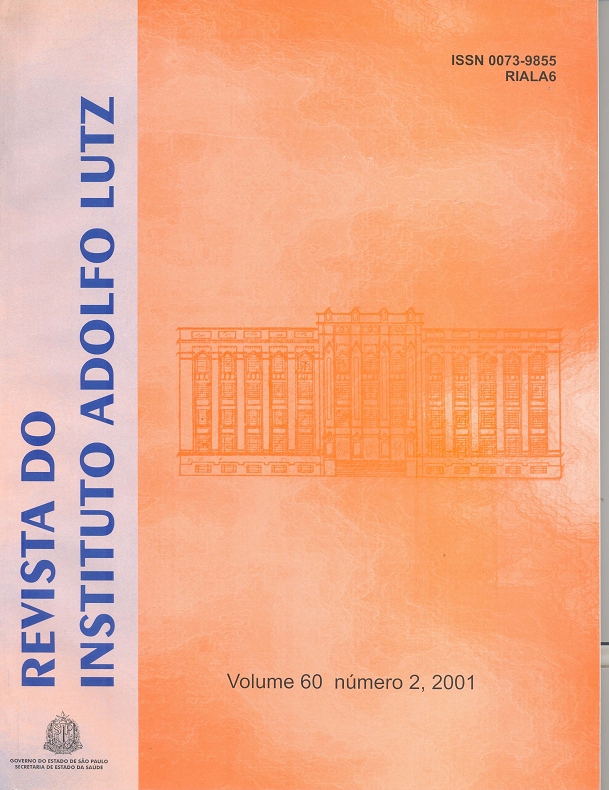Abstract
A considerable number of the arboreous species composes the Brazilian’s forests, but some of the fruits have shown to be good sources of nutrients. In this paper, the chemical composition of seeds, the fatty acid profile of the oil and the inorganic elements contained in the baru (Dipteryx alata Vog.), fruits from the region of Pirenópolis, state of the Goiás, Brazil, were determined. The chemical analytical methodology followed the “Analytical Methods of the Adolfo Lutz Institute”, 1985; the minerals and dietary fiber was determined by Inductively Coupled Plasma Atomic Emission Spectrometry (ICP-AES) technique and enzymatic-gravimeter method, modified by Lee et al., respectively. The sample showed a high level of the lipid (38,2 g/100 g) and proteins (23,9 g/100 g) and consequently values significative of calories (502 kcal/100 g), dietary fiber (13,4 g/100 g) and minerals (K, 827 mg/100 g; P, 358 mg/100 g; Mg, 178 mg/100 g). These results favour the use of the seeds for human and animals consumption, since that they don’t contain toxics and alergenic substances. The oil showed a high level of unsaturation (81,2%) nevertheless the fatty acids profile and the content of the a-tocopherol (5,00 mg/100 g), assimilate at the peanut oil, emphasizing that the oleic (50,4%) and linoleic (28,0%) acids, fatty acid essentials, reforce the use this oil as a source of raw material for the pharmaceutical and oleochemical industries.
References
2. Association of Official Analytical Chemists. Official methods of analysis of the Association of Official Analytical Chemists. 15th ed. Washington, D.C., A.O.A.C., 1995 (method 985.01).
3. Brasil. Leis, decretos, etc. Resolução Nº 482, de 23 de setembro de 1999, da Agência Nacional de Vigilância Sanitária do Ministério da Saúde. Aprova o Regulamento Técnico referente a Óleos e Gorduras Vegetais. Diário Oficial, Brasília, 13 out. 1999, Seção I, p. 82-87 (Anexo 3 – Óleo de amendoim).
4. De Angelis, R.C. Fisiologia da nutrição – fundamentos para nutrição e para desnutrição. São Paulo, EDART, 1977. v. 1, p.320.
5. Ferreira, F.A.G.; Graça, M.E. da S. Tabela da composição dos alimentos portugueses. Lisboa, Instituto Superior de Higiene Dr. Ricardo Jorge, 2ª ed., 1983. p.7.
6. Freire, R.M.M.; dos Santos, R.C.; Beltrão, N.E. de M. Qualidade nutricional e industrial de algumas oleaginosas herbáceas cultivadas no Brasil. Óleos & Grãos, 5(28):49-53, 1996.
7. Freitas, S.M. de Girassol, um mercado em expansão. Óleos & Grãos, 10(55):30-34, 2000.
8. Instituto Adolfo Lutz. Normas analíticas do Instituto Adolfo Lutz. São Paulo, IMESP, 3ª ed., 1985. p. 533, v. 1: métodos químicos e físicos para análise de alimentos.
9. Lee, S.C.; Prosky, L.; Devries, J.W. Determination of total, soluble and insoluble dietary fiber in foods. Enzimatic-gravimetric method, MÊS-TRI Buffer: colaborative study. JAOAC Int., 75:395-416, 1992.
10. Lorenzi, H. Árvores brasileiras: manual de identificação e cultivo de plantas arbóreas nativas do Brasil. Plantarum, Nova Odessa, 1992. p. 202.
11. Melheim, T.A. Fisiologia do desenvolvimento de Dipteryx alata Vog. – Contribuição ao seu estudo. São Paulo, Instituto de Biociências da Universidade de São Paulo, 1972, 215 p. [Tese de Doutoramento].
12. Pio Corrêa, M. Dicionário das plantas úteis do Brasil. Rio de Janeiro, 1984. 707 p. v. 2.
13. Popinigis, F. Fisiologia da semente. Brasília, Agiplan, 2ª ed., 1985. 289 p.
14. Rizzini, C.T.; Wors, W.B. Botânica econômica brasileira. São Paulo, EPUSP, 1976. 207 p.
15. Togashi, M.; Sgarbieri, V. C. Avaliação nutricional e da proteína e do óleo de semente de baru (Dipteryx alata Vog.). Ciênc. Tecnol. Aliment., 15(1):66-69, jan.-jun. 1995.
16. Vallilo, M.I. et al. Lecythis pisonis Camb. nuts: oil characterization, fatty acids and minerals. Food Chem., 66:197-200, 1999.
17. Vallilo, M.I.; Tavares, M.; Aued, S. Composição química da polpa e da semente do fruto do cumbaru (Dipteryx alata Vog.) – caracterização do óleo da semente. Rev. Inst. Flor., São Paulo, 2(2): 115-125, 1990.

This work is licensed under a Creative Commons Attribution 4.0 International License.
Copyright (c) 2001 Emy Takemoto, Isaura A. Okada, Maria Lima Garbelotti, Mário Tavares, Sabria Aued-Pimentel
